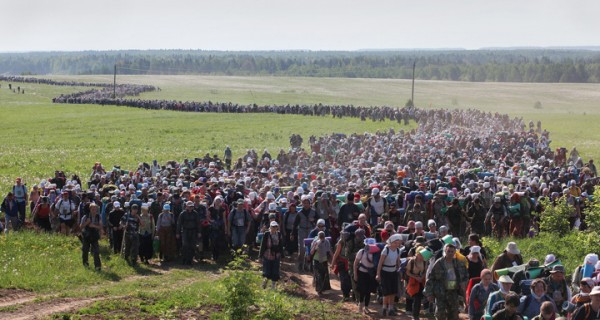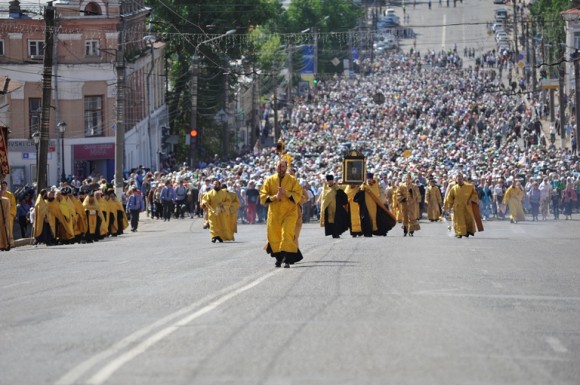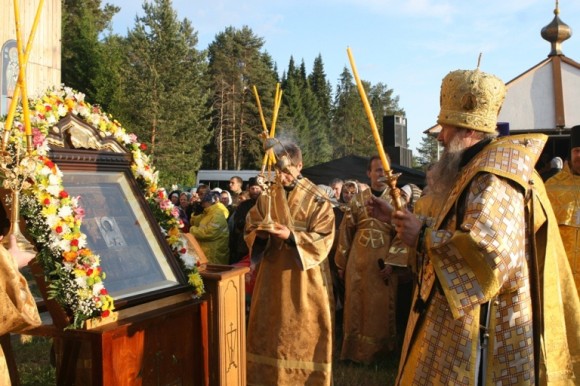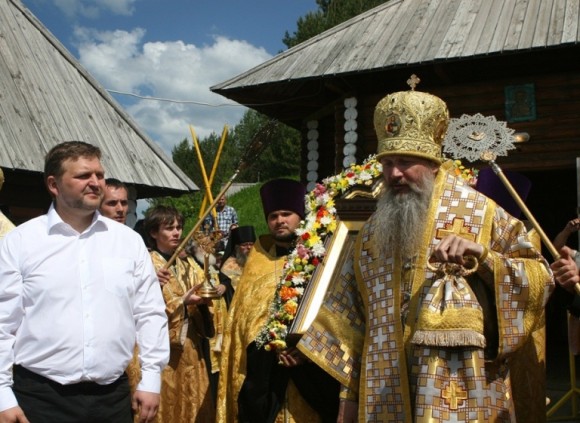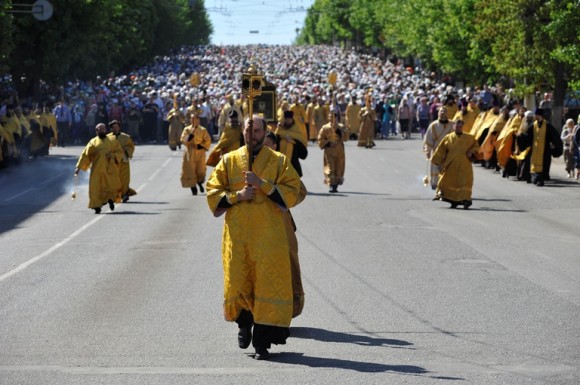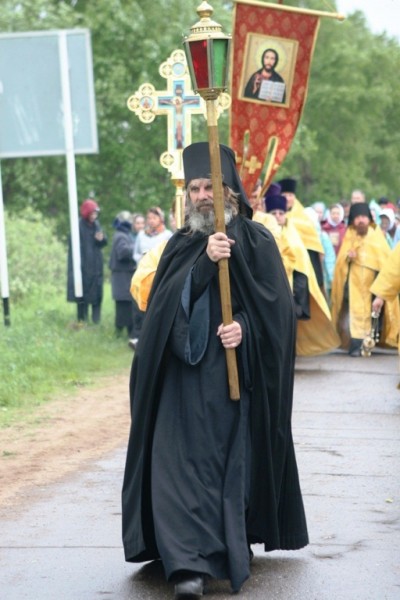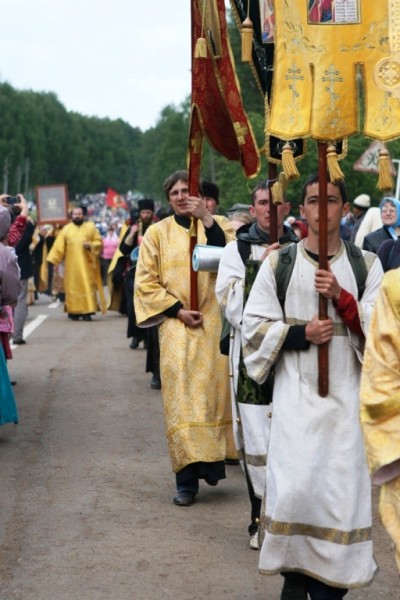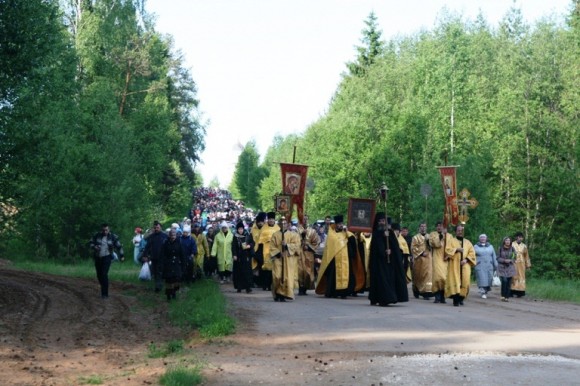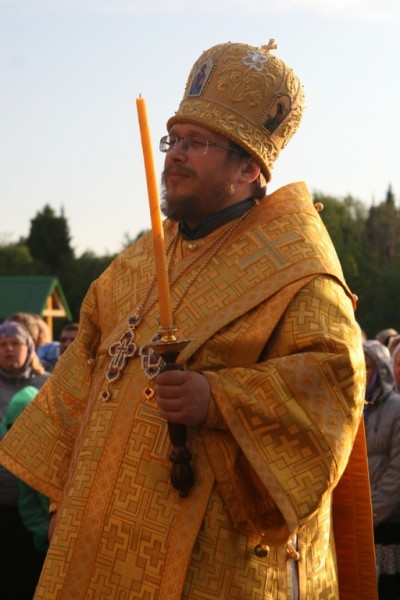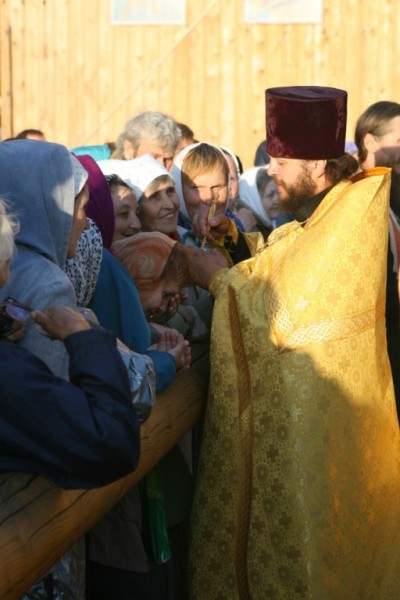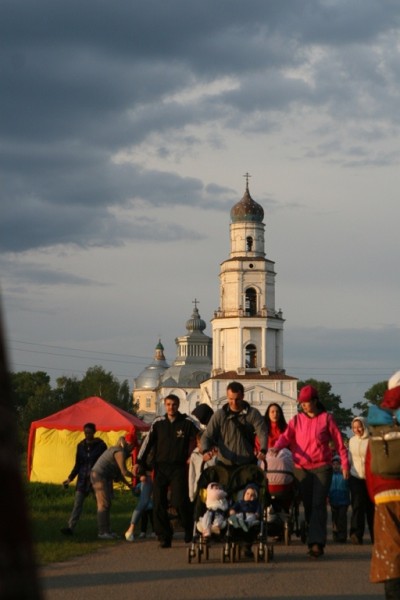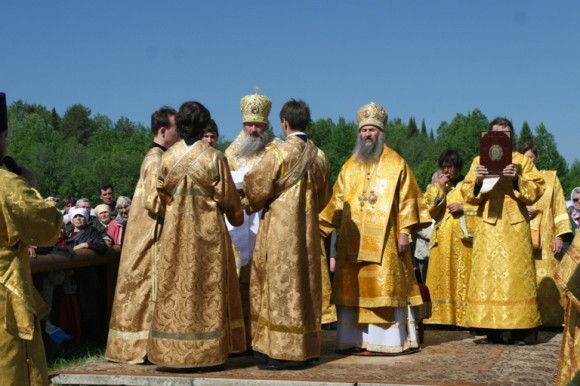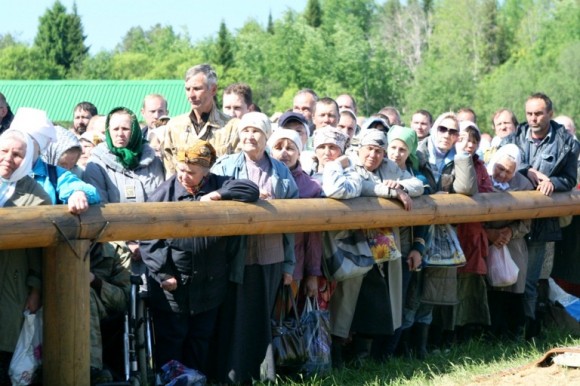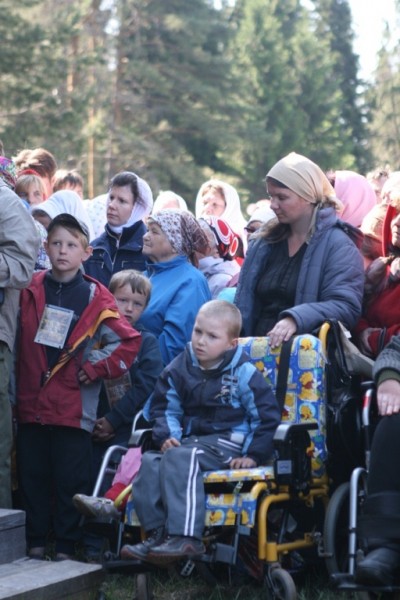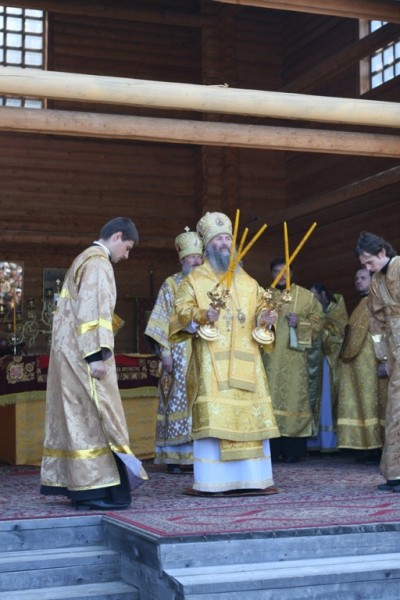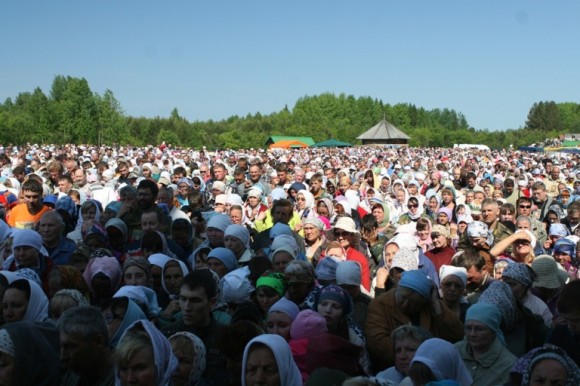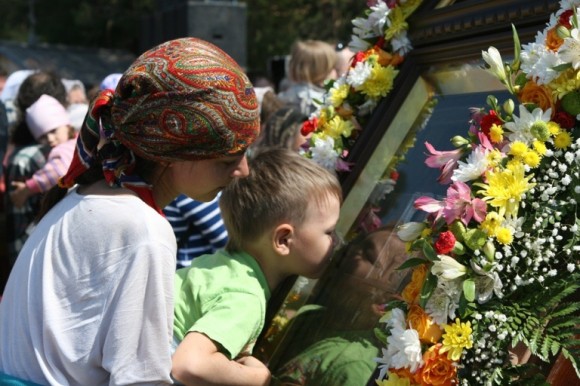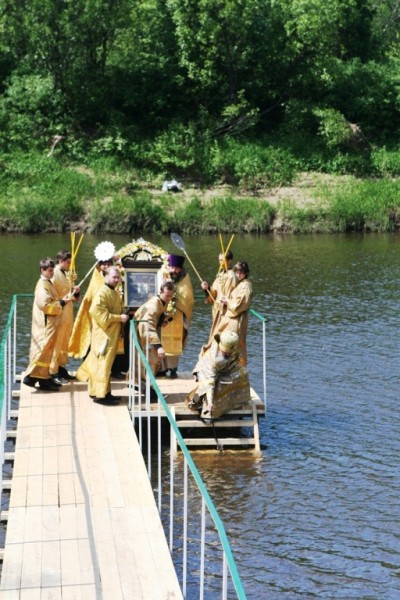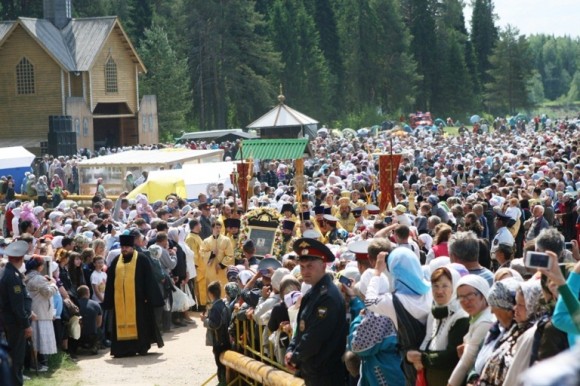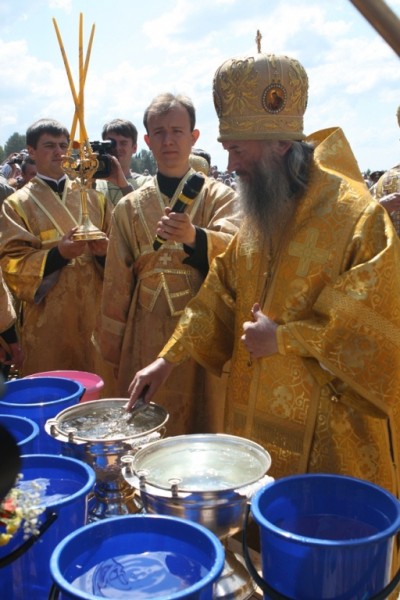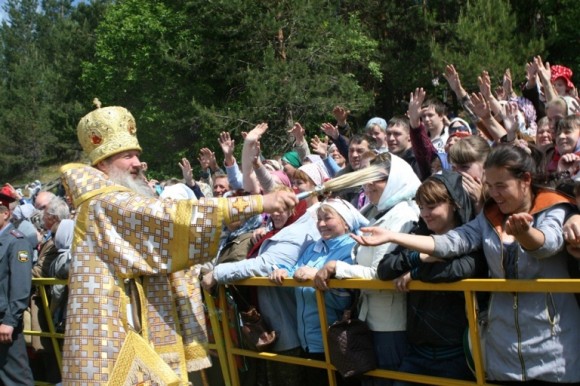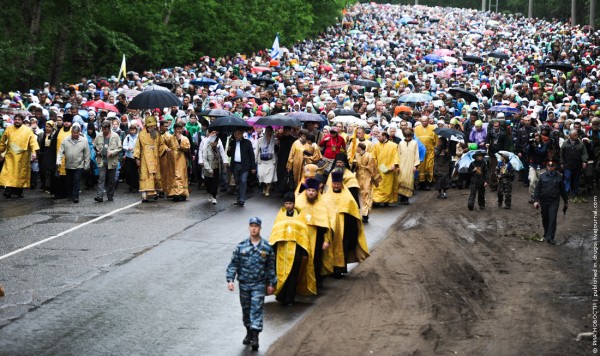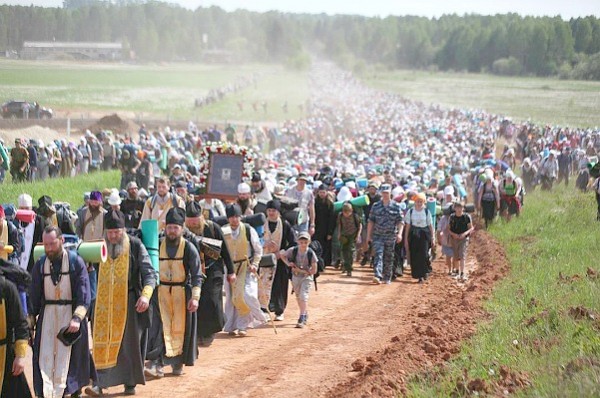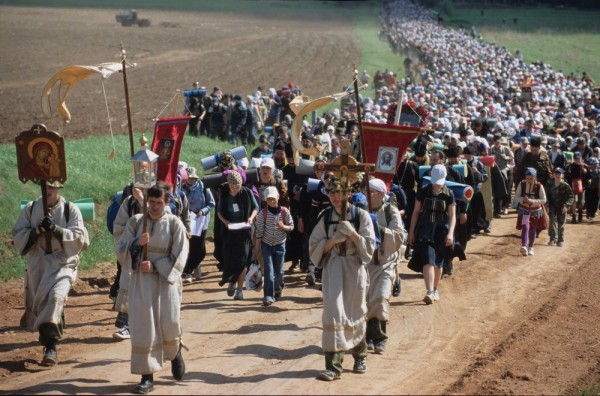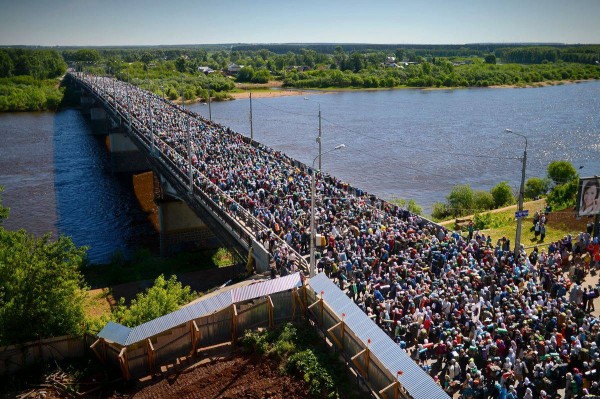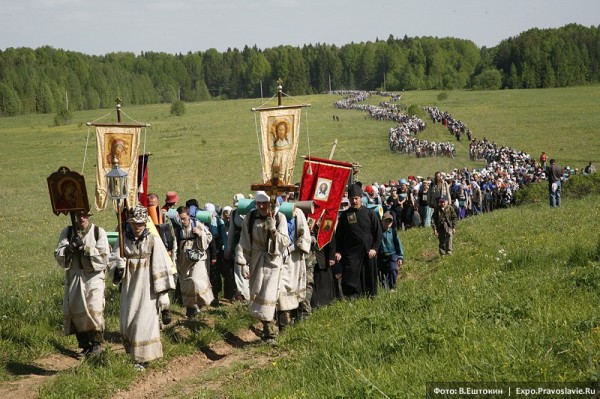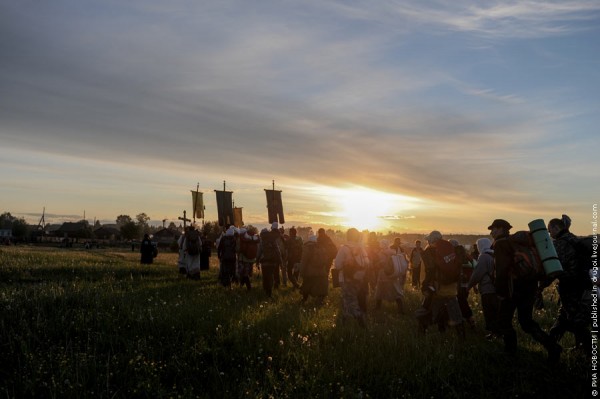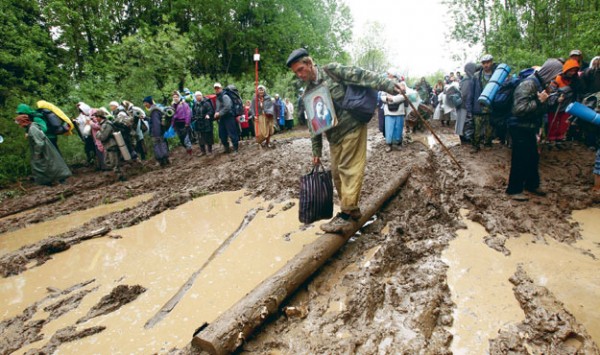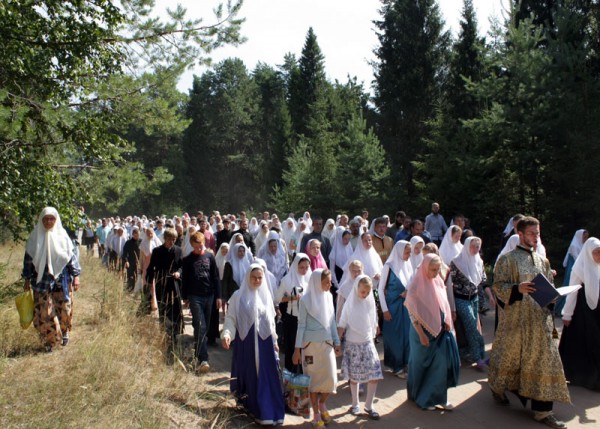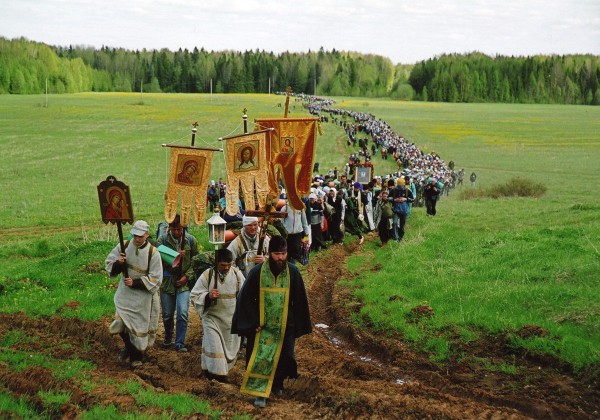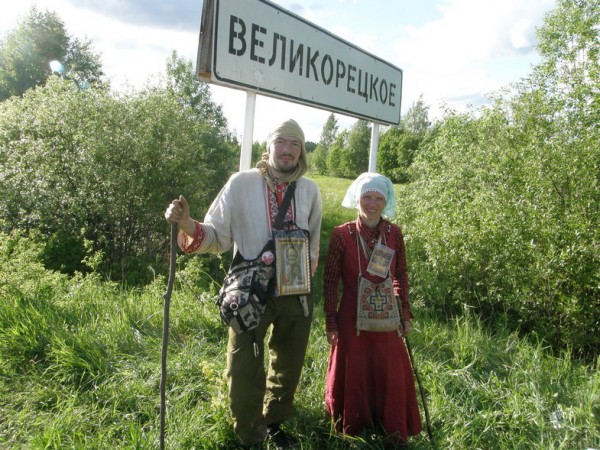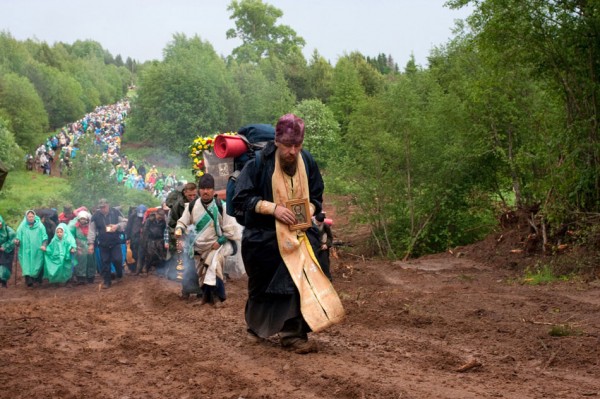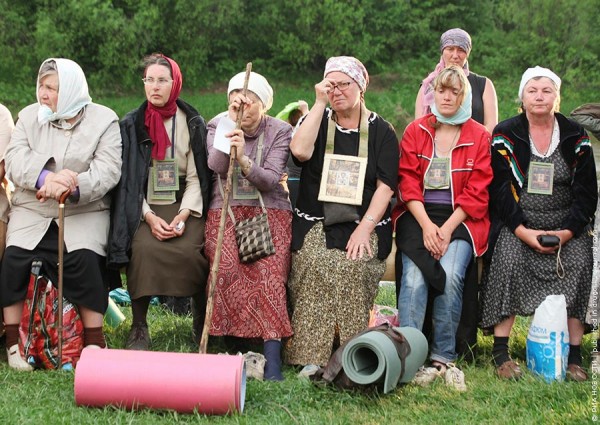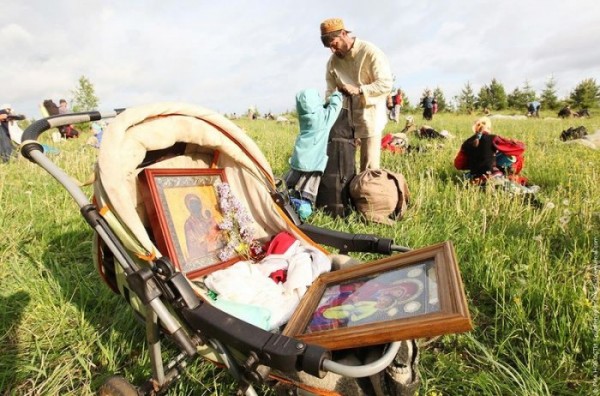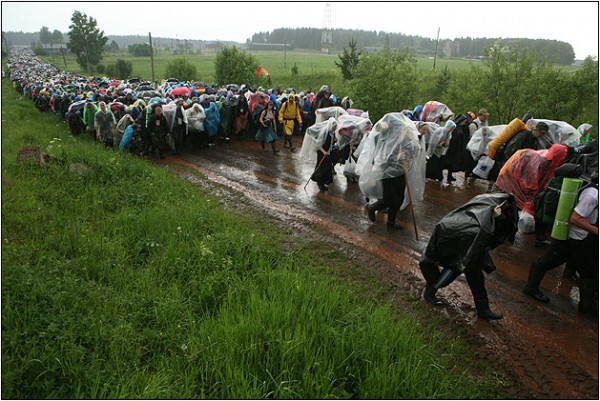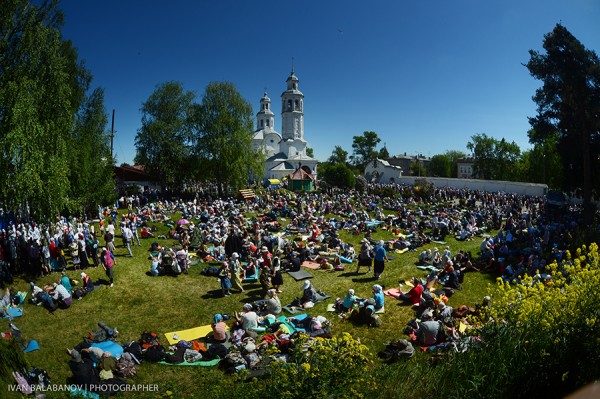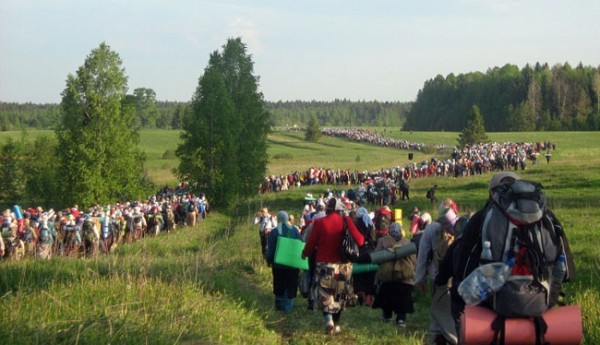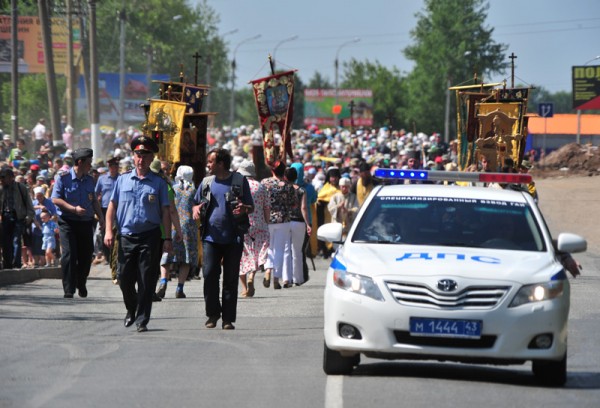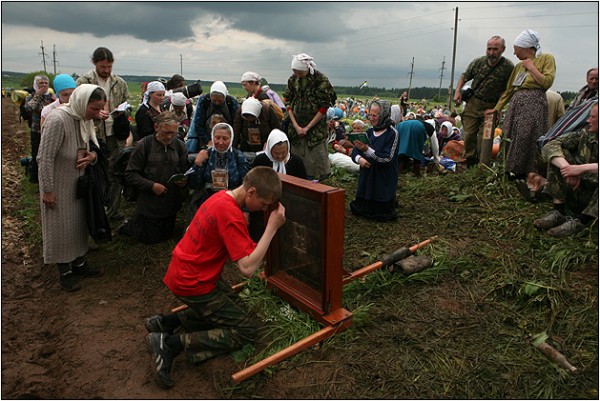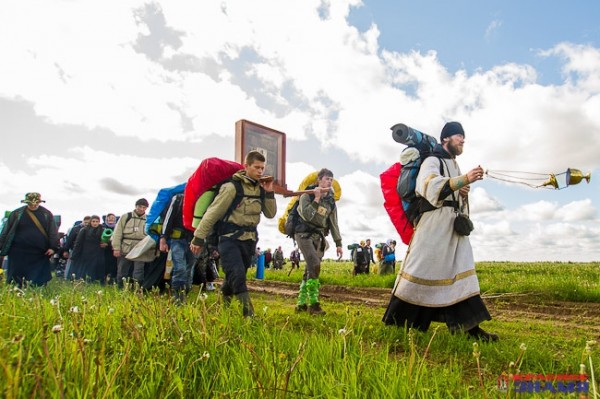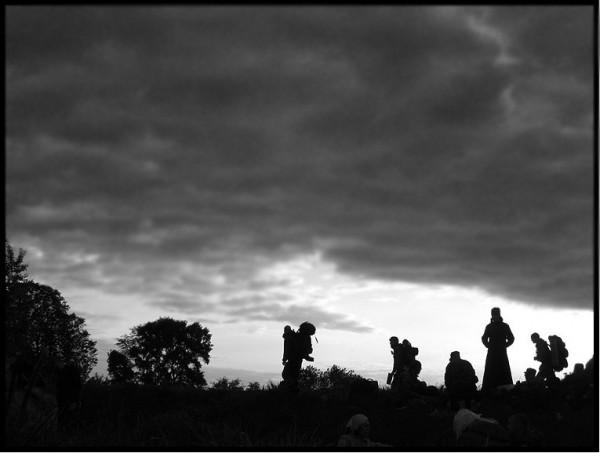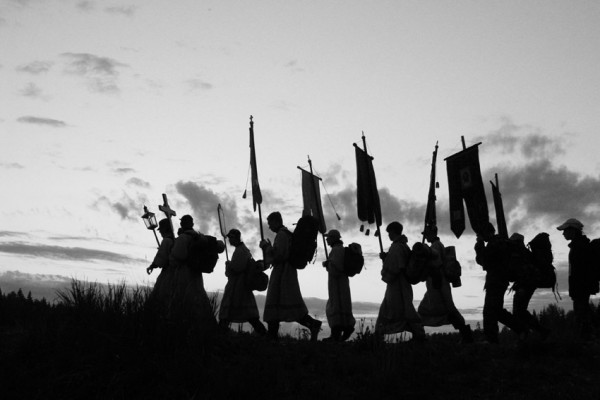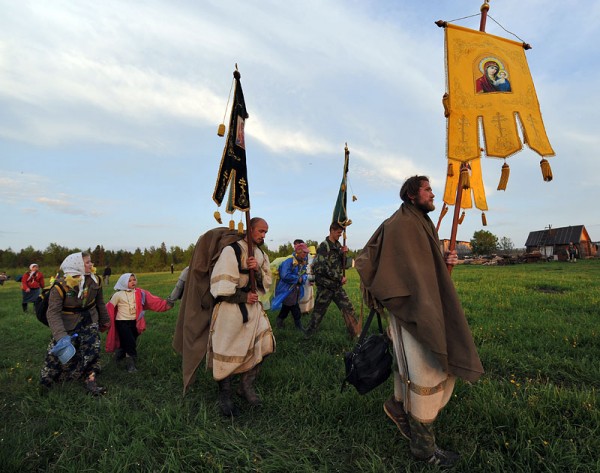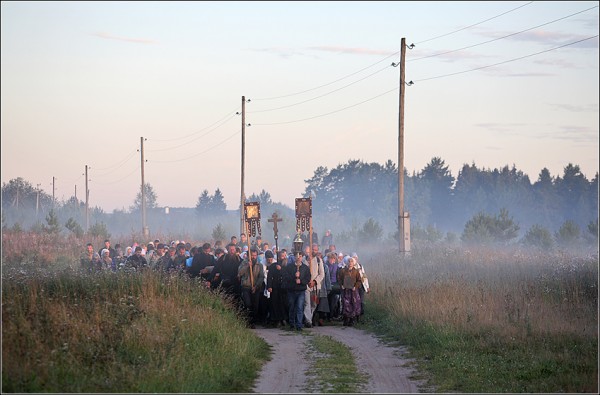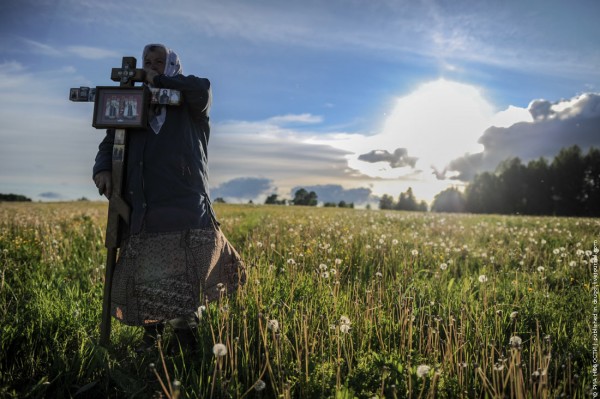The Velikoretskiy procession is the most ancient, famous, massive, and majestic of all the Vyatka processions. It begins on June 3 from the St. Seraphim Cathedral of Kirov, and then goes through the villages Makarye, Bobino, Zagarye, Monastyrskoe, and Gorohovo. The final destination is the Velikoretskiy village, where molebens are held in churches and on the Great River’s banks. The pilgrims return through the Medyany and Murygino villages and arrive on June 8 in Kirov.
Thousands of pilgrims from different cities and villages of Russia walk 180 kilometers. Church services in the Velikoretskiy village are attended every year by more than 10,000 people, including foreign visitors.
Legend has it that in 1383, on the high bank of the Great River, the peasant Agalakov was visited by the icon of St. Nicholas. Soon, the icon began to heal and work miracles. Rumor about the miraculous icon quickly spread throughout the region, people came to the place of the icon’s appearance, thanking God for giving them an icon that gave spiritual solace and healing. Through their combined efforts, the peasants built a chapel at the place of the icon’s appearance, and later began to construct a church more worthy of the miraculous image.
In XIII-XIV centuries, the Russian people had only just begun to settle in the Vyatka lands, which were mainly populated by pagan tribes. In 1392, concern for the icon prompted the Vyatka people to move the icon from the Great River’s banks to the city of Hlynov (at that time, and until 1780, this was Vyatka’s central town). The people of Hlynov promised to return the icon annually to its place of appearance. Thus was born one of the most ancient traditions of the Vyatka land: the Velikoretskiy procession.
News of the miraculous icon reached the capital. In the XVI century, by order of Tsar Ivan IV, the icon was brought from Hlynov in Moscow. During the journey, many sick people were healed and miracles occurred. By the Tsar’s decree, one of the altars of St. Basil’s Cathedral was consecrated in honor of the St. Nicholas Velikoretskiy Icon. Copies of the icon were painted.
Since that time, the whole of Russia begins honoring the Velikoretskiy Icon of St. Nicholas. The second time the miraculous icon visited Moscow was in the 17th century, by order of Tsar Mikhail Fedorovich. In 1668, the official day of commemoration of the St. Nicholas Velikoretskiy Icon was appointed on May 24 (June 6, new style).
Until the 1920s, the St. Nicholas Velikoretskiy Icon stood in Vyatka’s main cathedral, from where the procession started. After the cathedral’s destruction, the icon disappeared. From the 1930s to the 1990s, the Velikoretskiy procession was banned, but the faithful, despite the ban, proceeded to the holy place every year. In 1999, the centuries-old tradition was revived, and in 2000 by the decree of Patriarch Alexy II, the Velikoretskiy procession was given the status of an All-Russia Procession.
For more than 600 years, the icon of St. Nicholas has been brought to its place of appearance: the Great River. Until 1777, the procession went by water on the Vyatka and Great River and Great by boats and rafts, and then began to take place on land.












